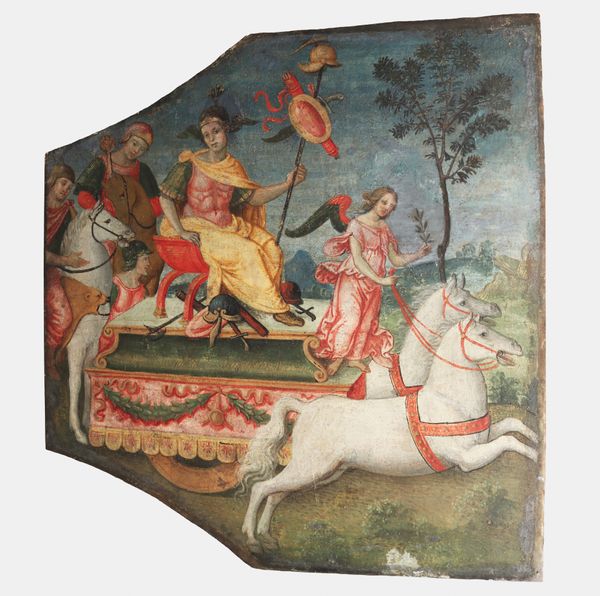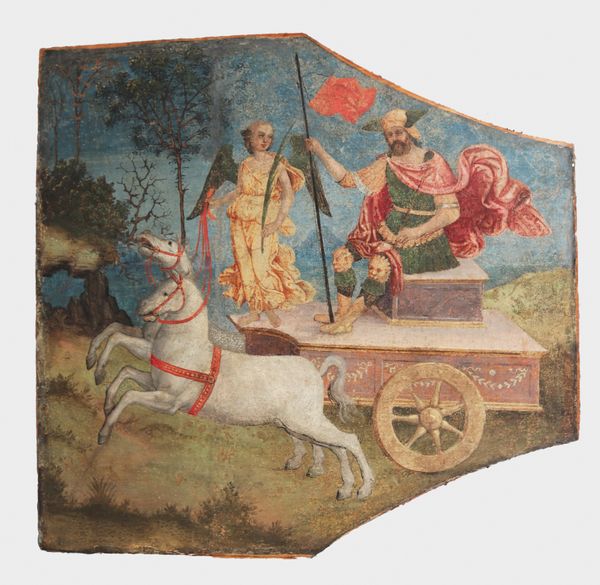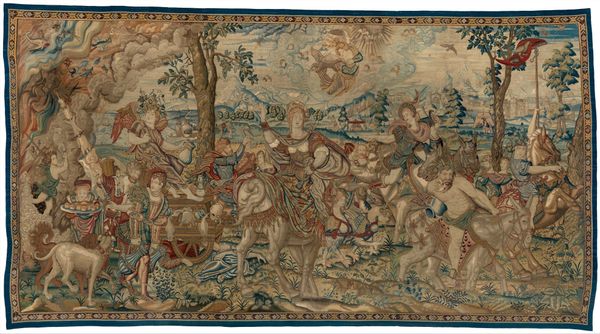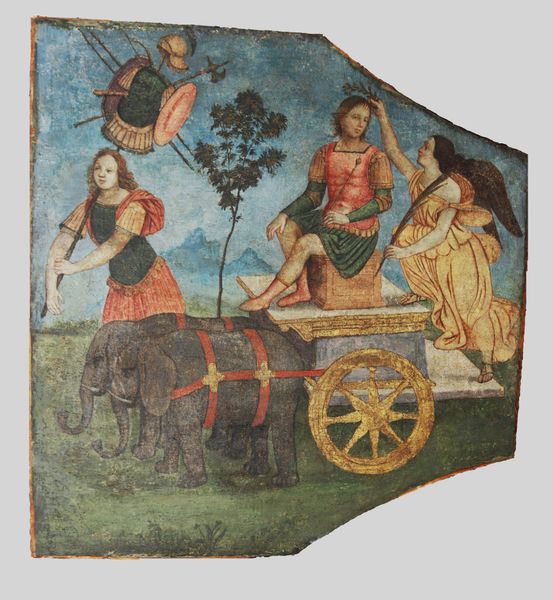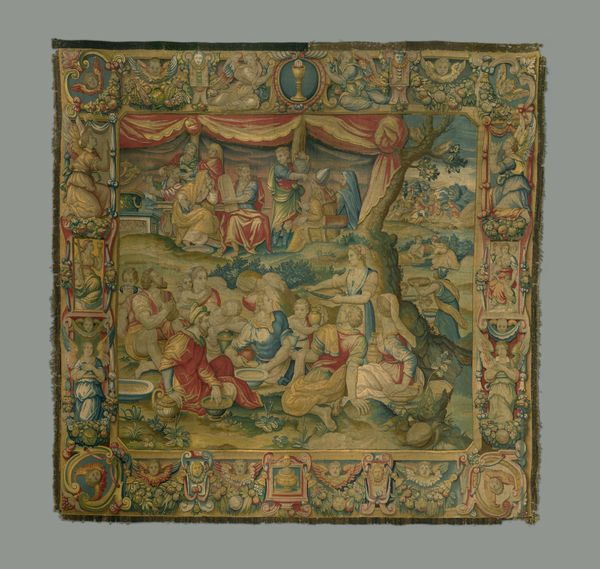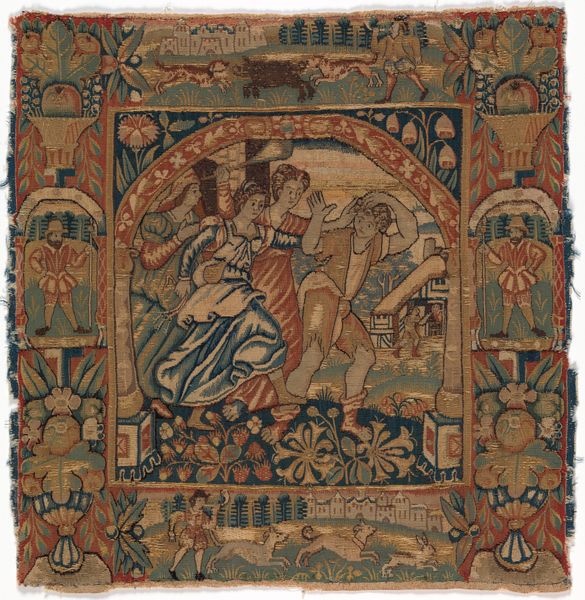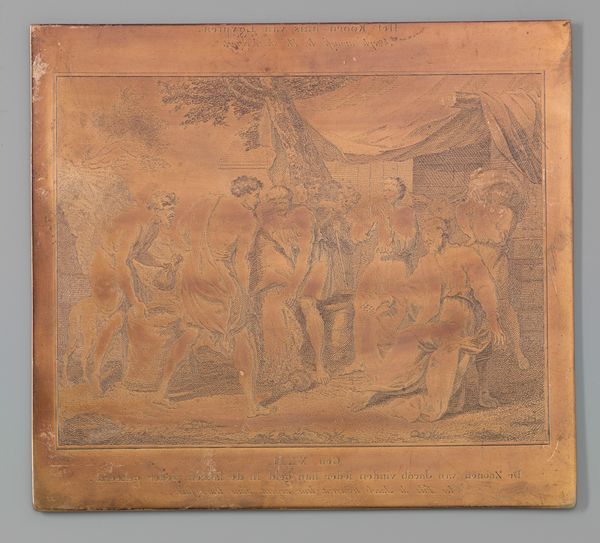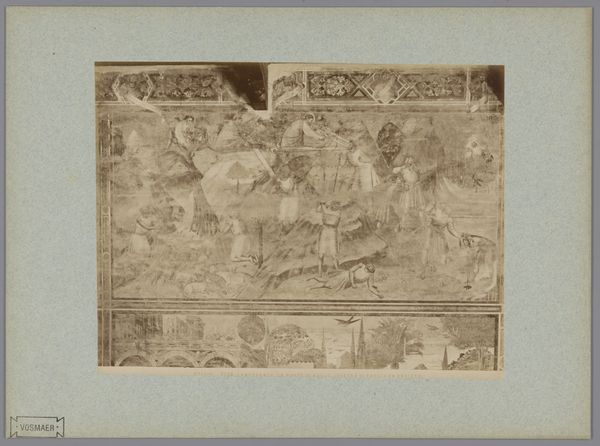
painting, fresco, watercolor, sculpture
#
water colours
#
allegory
#
narrative-art
#
painting
#
fresco
#
watercolor
#
sculpture
#
mythology
#
decorative-art
#
italian-renaissance
#
mixed media
#
watercolor
Dimensions: Overall: 31 × 31 3/4 in. (78.7 × 80.6 cm)
Copyright: Public Domain
Editor: Here we have Pinturicchio's "Rape of Proserpine," created between 1504 and 1514, currently at the Met. It's quite a striking piece, and I’m immediately drawn to the chaotic energy juxtaposed with the idyllic landscape. What is your take on this fresco? Curator: It's important to contextualize this within the Italian Renaissance, where mythological narratives were often used to explore social and political dynamics. Consider the concept of "rape" itself; how it was understood, depicted, and perhaps even used to justify certain power structures. What strikes you about the visual presentation of the abduction? Does it feel glorified, cautionary, or something else entirely? Editor: I hadn’t considered the socio-political implications of the title. Visually, I see a struggle, but it feels almost performative, like a theatrical depiction rather than a raw act of violence. Curator: Precisely. Notice the elaborate costumes, the studied poses, and the overall decorative quality. These elements were often commissioned to convey a sense of grandeur and cultural authority. Think about the patrons who would have commissioned and viewed such a work. What messages might they have been trying to convey through this representation of mythology? Editor: So, the beauty almost masks, or even legitimizes, the violence? Curator: Potentially. It reveals the complex relationship between art, power, and the narratives we choose to tell ourselves about history and morality. Considering it's displayed now in a museum context, what public role do you think this piece fulfills in the 21st century? Editor: That’s a really unsettling, but crucial, point about art reflecting power structures. I see it now, it's not just pretty decoration. Curator: Exactly. And perhaps that unsettling feeling is what makes it relevant today, forcing us to confront uncomfortable truths about the past. Editor: Thank you. I'll certainly never look at another Renaissance painting the same way again.
Comments
No comments
Be the first to comment and join the conversation on the ultimate creative platform.
